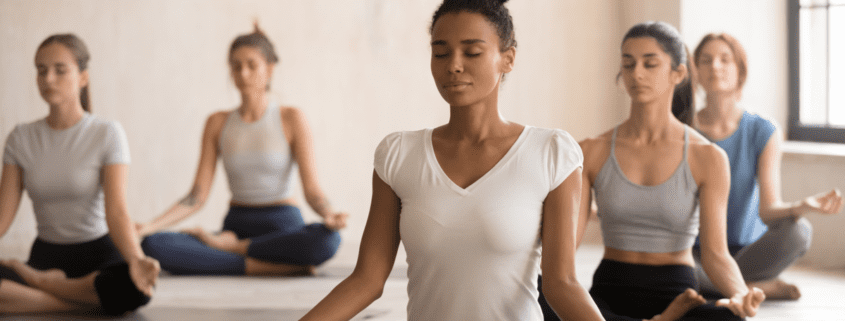How the Wellness Trend Impacts CRE Development
The wellness economy continues to take the world by storm, changing the way people eat, behave, spend, and live. This industry was valued at $4.2 trillion in 2017, and only continues to expand as people share their newfound wellness habits on social media and spread awareness of the trend.
Wellness is a catch-all term for a shift toward a healthier lifestyle generally involving fitness, nutrition, and self-care. As a result of living in a fast-paced, stressful world, an increasing number of people choose to structure their activities around optimizing their mental and physical health.
Wellness has had clear influence across many industries, resulting in trends such as the acceptance of athleisure, rise in on-demand and subscription-based fitness, and the popularity of wellness retreats. These shifts are, in turn, making a direct impact on the commercial real estate industry. Wellness real estate spending sits at an annual $134 billion, making real estate a growth leader within the industry. Read ahead to learn how these dollars are being spent, and how wellness continues to disrupt CRE across asset classes.
Office
A growing number of employers are implementing wellness programs to reduce stress and increase productivity among employees. Some facets of these programs are small-scale changes, such as offering fresh fruit and vegetables, while others are changing the way office buildings are constructed and designed. For example, 50% of companies with over 5,000 employees now have on-site or near-site healthcare facilities.
And while an on-site gym is now part for the course, many companies are looking to upgrade the work space and create a dynamic work environment that incorporates wellness into the very construction. Floor-to-ceiling windows that allow in more natural light, indoor meditation spaces with sound proofing and natural elements like plants and fountains, and full kitchens with cooktops stocked with fresh ingredients are only a few of the considerations modern employers are turning their attention to as wellness becomes more of a determining factor in talent acquisition and retention.
Retail
The experience-based focus that continues to stabilize retail amidst e-commerce disruption is heavily influenced by the wellness economy. Consumers are drawn to retailers that offer experiences along with merchandise, and the types of experiences these consumers prefer align well with the wellness economy. Businesses like yoga studios and spas can serve as retail anchors, and eateries that serve vegan or locally sourced foods, for example, tend to profit when located near other wellness anchors like gyms.
This collaborative, complimentary approach is breathing new life into struggling strip-malls and shopping centers and holding vacancy rates steady amid retail decline at 10.2% in Q1 2019. As wellness continues to factor into consumer habits, the retail landscape evolves to meet new expectations. Adaptable, multifunctional spaces equipped to meet diverse tenant needs allow for opportunistic profitability in locations near wellness hubs such as gyms.
Multifamily
Amenities focused on promoting wellness have surged in popularity and become a priority for developers in the multifamily sector. Wellness-focused amenities aren’t limited to gyms, however. Everything from landscaping and apartment layouts to juice bars and kickboxing studios are part of a revamped amenity scheme aimed at tenant satisfaction in the wellness sector. The WELL Building standard implemented in 2014 offers a 10-point rating system to developers who utilize the built space as a tool for achieving more positive health outcomes for tenants. Measures like building to increase natural light and installing HVAC systems with best-in-class air quality earn developers a higher score.
There are now 720 communities that make wellness priority one to attract tenants, and this number is steadily climbing. Such spaces have features like fully outfitted kitchens stocked with fresh and locally sourced ingredients and rooftop gardens that give tenants space to meditate and focus on promoting a calm mental state. Most also offer free community engagement opportunities like fitness classes and financial management, taking a holistic approach to overall tenant satisfaction that drives occupancy rates up.
Hospitality
Wellness tourism that promotes health through physical and spiritual activity is integrating into the Millennial travel trend to produce unique vacation habits. While leisure often coincides with self-care, the standard among hoteliers is transforming under increased pressure from the wellness economy. Design features are an important consideration in lodging, with aesthetically pleasing spaces that incorporate natural influences helping to improve mental health among travelers. Giving control of environmental features like temperature, noise, lighting and more allows travelers to customize their experience to their own goals—whether improved sleep and relaxation or an energizing and invigorating escape.
The bar has undeniably been raised within the hospitality industry due to shifting lifestyle trends. Even basic economy travelers now expect some elements of wellness built into accommodations. This change doesn’t mean every hotel must be a spa, but it does mean travelers expect an aesthetically-pleasing environment with healthy dining options at minimum.
The wellness economy is disrupting commercial real estate and bringing with it the opportunity to revive markets through innovation and integration of features that will lead to a healthier and happier society. A growing emphasis on self-care drives demand for spaces that promote a more balanced and health-focused mentality in home, work, and leisure development, making wellness an all-inclusive gamechanger for CRE.
For further reading, check out CRE Sustainability Initiatives of the Future











